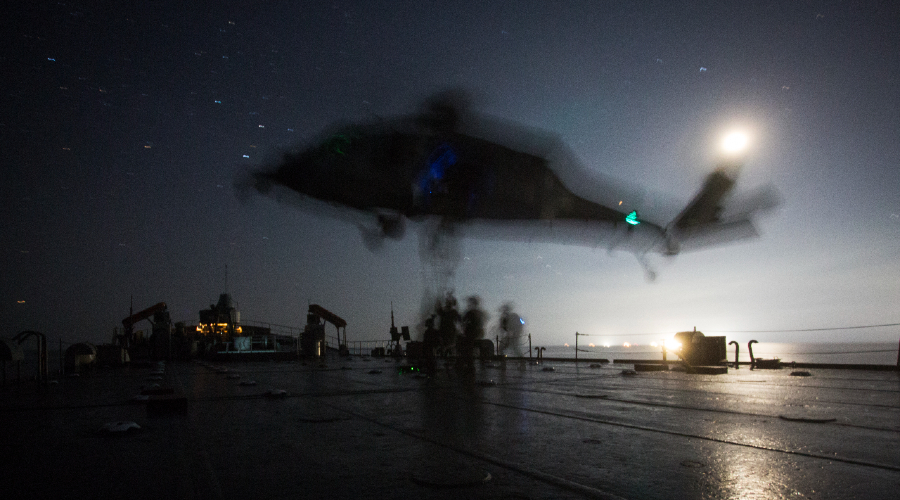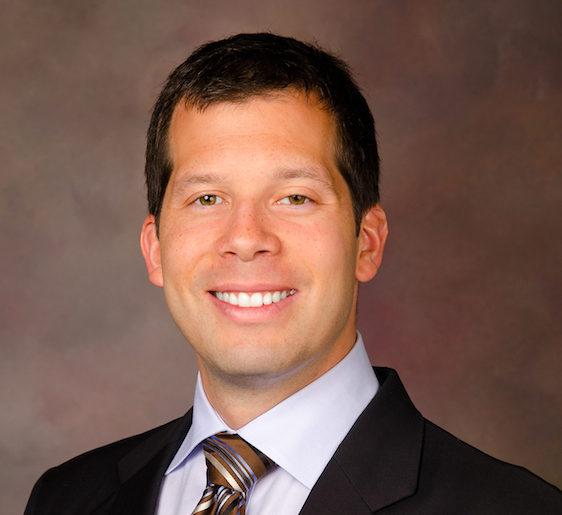Indispensable but Insufficient: The Role and Limits of Special Operations in Strategic Competition
Special Operations Forces' responsibilities will shift to meet threats from state adversaries, but they are not an all-purpose force.

Published by The Lawfare Institute
in Cooperation With

Editor’s Note: After the 9/11 terrorist attacks, special operations forces (SOF) were often the point of the counterterrorism spear. As the United States shifts away from counterterrorism and focuses on the threats that Russia and China pose, SOF can play a vital role, according to David Ucko, a professor at the National Defense University. To do so, however, Ucko argues that SOF must recalibrate, changing their composition and their focus.
Daniel Byman
***
The United States finds itself in an era of strategic competition, as China, Russia, and other revisionist states challenge the norms and order that define American power. The U.S. government is now focused on how to respond, but that question is compounded by its adversaries’ diverse and global methods of attack. As America’s rivals privilege ambiguity and subterfuge, they deliberately avoid U.S. strengths, particularly in the military domain.
U.S. special operations forces (SOF) can contribute to strategic competition through their specialization in irregular warfare. In recent years, SOF have broadened their application of foreign internal defense and unconventional warfare—both irregular warfare missions and SOF core activities—to fit this new strategic setting. Foreign internal defense traditionally meant aiding a friendly government against an insurgency, but SOF now see it as a means of boosting a country’s “resilience” against foreign-sponsored interference. Unconventional warfare traditionally implied sponsoring an insurgency against an illicit or occupying government, but SOF now consider this work as supporting “resistance” capabilities for states facing foreign invasion or seeking to deter such a threat. Put differently, resilience protects against foreign subversion and resistance makes an invasion more painful—and therefore less likely.
U.S. efforts to build resilience and resistance have proved themselves in Ukraine and can help other partners defend against or deter similar threats. Yet these tasks are also highly demanding, requiring institutional readiness and protracted engagement abroad. To meet the demand, SOF should rebalance in favor of foreign internal defense and unconventional warfare and focus on the skills that these missions will require within this new strategic era. This will mean an emphasis on language training, cultural know-how, political awareness, and strategic acumen—all at scale—with major implications for SOF recruitment and career tracks. It will mean fewer deployments, more educational opportunities, and less emphasis on direct action and traditional combat skills more broadly. The decline of high-tempo counterterrorism operations provides an opportunity for such a shift, but the challenge of reform is significant and the complexity of the task high.
A second challenge is that foreign internal defense and unconventional warfare entail more than just military tasks. In foreign internal defense, the assets trained by SOF must be supported by a capable security sector, undergirded by sustainable institutions, and operating alongside civilian agencies that can address political, societal, and economic vulnerabilities. In unconventional warfare, fostering the potential for armed resistance is most effective when it is complemented by a whole-of-society effort that provides a legal framework, engages with allies and partners, builds a narrative for mobilization, and legitimizes the action in the eyes of the public. This calls for greater interagency coordination and integration, even in executing what many policymakers view narrowly as a SOF task.
The reliance on nonmilitary institutions and authorities is particularly pronounced where the enemy strategy, while nefarious, is nonmilitary in nature. Where domination is achieved indirectly, and with no compelling threat of violence, SOF’s work on resilience and resistance risks veering into civilian realms where other agencies should have the lead. Some defense analysts have, for example, suggested that SOF prioritize “cognitive access denial” or “financial access denial”—to wit, resisting propaganda and disrupting “proxy, patronage, or corruption networks.” It is unclear whether SOF can adequately train and prepare for these technical tasks, at least without losing the core and demanding functions already expected of them. Even where SOF have relevant capabilities—for example, their military information support operations assets, which can engage with hostile disinformation online—so do civilian actors, be they within the Department of State, the Agency for Global Media, or the embassy’s country team.
A third challenge for SOF is that strategic competition is primarily nonmilitary in nature. As America’s competitors seek to avoid its military strengths, they resort instead to weaponized corruption, election interference, media penetration, political infiltration, dodgy trade deals, and infrastructure development. Against such a broad attack, there are clear limits on how much the United States can and should expect from SOF—which, despite their expanding list of responsibilities, are still a military force. Instead, a more diverse set of skills will be needed. Developing the required portfolio of capabilities within the relevant government agencies has proved challenging, but while SOF are often viewed as the “problem solver” for tasks that cannot be accomplished by others, their role in countering these nonmilitary tactics requires careful delimitation.
In seeking a role within this strategic competition, SOF’s main contribution might be to empower an interagency solution, by adding that special ingredient that allows a broader response to unfold. There is precedent for such arrangements. For example, when he was commander of Special Operations Command-Pacific (SOCPAC), Gen. Jonathan B. Braga oversaw an impressive effort to counter Chinese malign influence in Southeast Asia and the Pacific Islands. Through partnerships with the Department of the Treasury, the FBI, and the Department of Justice at Indo-Pacific Command (INDOPACOM), a small SOCPAC team was able to recover and analyze evidence relating to criminal networks linked to the Chinese Communist Party, resulting in the Office of Foreign Assets Control sanctioning these actors under the Global Magnitsky Act. In a similar manner, SOCPAC worked with the Commerce Department’s National Oceanic and Atmospheric Administration to investigate, report on, and check Chinese fishing companies operating illegally in the South Pacific. Through military information support operations, SOCPAC was able to broadcast horrific images of this illicit activity to senior policymakers at INDOPACOM, the Coast Guard, and the State Department, as well as other advisers and decision-makers in Washington.
These types of partnerships should extend to general purpose forces, particularly as concerns security force assistance and persistent engagement. These are areas where SOF have clear value but are limited by their size and scope. The Army and Marine Corps have belatedly established a units specialized for security force assistance, recognizing the importance of this form of engagement and the need for partner capacity to defend against common threats, be they state or non-state actors. The National Guard’s State Partnership Program also engages in this mission and produces uniquely enduring bonds of security cooperation in 100 nations around the globe. Rather than threaten SOF equities, these assets should allow for a calibrated division of labor, with SOF and conventional forces working together to extend America’s reach.
The need for interagency collaboration is recognized in SOF’s guidance and statements, but it rubs up against SOF’s desire to carve out relevance in a new strategic era and their occasional (and by no means universal) tendency to operate in parallel rather than in support of others. The problem is compounded by the tendency of political leaders to look to SOF for seemingly low-risk and small-footprint solutions to unorthodox problems. Unless the present opportunity to recalibrate is seized, the outcome will likely be that SOF are handed ever more missions—missions for which they are not ready and for which they cannot prepare without accepting risk elsewhere—all while the broader portfolio of interagency capabilities remains underfunded and underutilized.
Three Areas for Improvement
In the words of a former assistant secretary of defense, there is no “SOF easy button” for strategic competition. SOF’s contribution will in itself be demanding, requiring careful preparation. For strategic effectiveness, greater investment is also needed across the U.S. national security enterprise—an enterprise that extends far beyond the traditional security sector. Three key requirements stand out: awareness, integration, and strategic clarity.
Awareness
Despite some progress, U.S. civilian agencies have struggled to adapt in strategically effective ways to the competition underway. Meanwhile, too few within the military community are well versed with the civilian capabilities that exist or how they could be empowered. Across the board, greater awareness is required: of the competition at hand, its nature, and the roles of different components in generating a tailored response.
This awareness could be achieved through interagency strategic education, training, and sensitization. The College of International Security Affairs (CISA) at the National Defense University provides a model for such education that could be scaled up for even greater effect. Programming at CISA’s Fort McNair campus draws together senior officials from across the armed services, the intelligence community, U.S. government agencies, and key partner nations for education in irregular warfare and associated strategies. At its program at Fort Bragg, civilian academics teach an irregular warfare curriculum to SOF officers and noncommissioned officers alongside international SOF students and State Department personnel. Both programs could be expanded to encourage the cultural and organizational awareness needed for strategic competition.
Integration
A second key requirement is better integration in executing a truly national American response. Much could be achieved through cross-functional teams, liaison officers, and other structural ways of cutting across agencies, allowing for the synchronization of respective strengths. The newly formed Irregular Warfare Center could play a leading role in this initiative, as it provides a focal point for irregular warfare and taps into existing networks devoted to this topic. As of the fiscal year 2023 defense budget, the center was granted authorities to engage across agencies to enhance America’s capability for irregular warfare and strategic competition. It is also working with the Army to define an operational concept for irregular warfare across the force, thereby helping to institutionalize relevant capabilities and career tracks.
Strategic Clarity
The final need is for strategic clarity. Despite a welter of commentary on strategic competition, it is often left unsaid what the United States and its partners are competing for and what success might look like. Put differently, what is the political essence of the problem? In which areas must the United States stand firm, and where can it cooperate? The lack of clarity on these questions leads to a reactive posture where everything, everywhere is the problem, to be addressed all at once.
The ultimate requirement is therefore for a strategy that proceeds according to a clearly elaborated theory of success rather than simply the means and capabilities at the U.S. government’s disposal. This, in turn, requires greater familiarity with how to craft strategy for the ambiguous and variegated attack presently underway.




